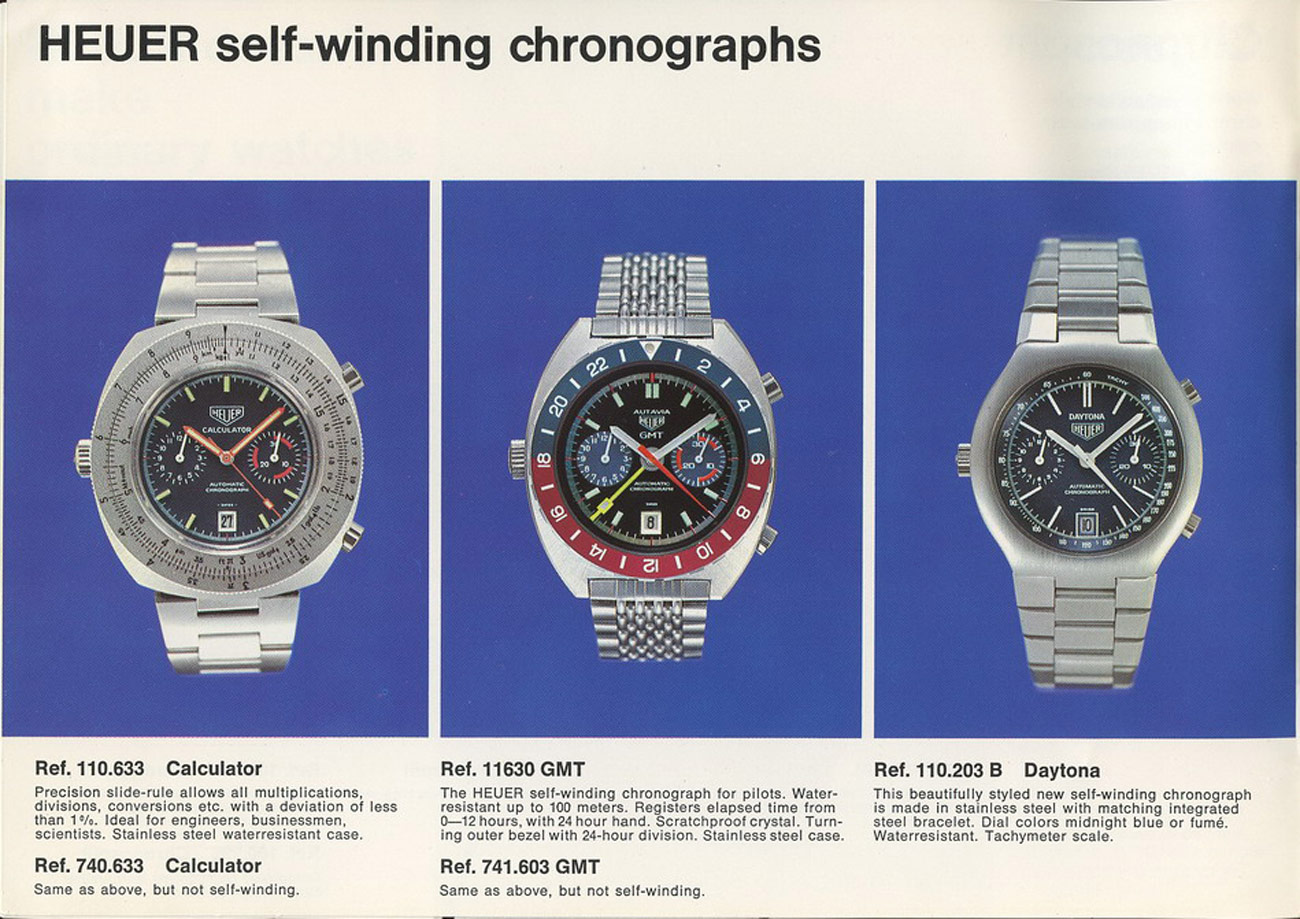Welcome to “Watches You Should Know,” a new bi-weekly (the once-every-two-weeks kind) column highlighting little-known watches new and old that have interesting stories or have had a surprising impact on the industry.
No discussion of vintage Heuer chronographs can go unfinished without a thorough discussion of how prevalent the brand was in the racing scene during the mid 20th century. The brand cemented its reputation amongst the racing crowd with the Autavia chronograph, added a dose of pared-down stylishness to the formula with the Carrera and then wholly reimagined the motorsports chronograph design with the Monaco. These three watches are quintessential racing chronographs and timekeeping icons, and if you want to own a vintage example today be prepared to pay dearly.
But these three timepieces were far from the only chronograph models the watchmaker was building at the time. Some collectors may know of the squircle-cased Silverstone, the bold Camaro or the blacked-out Monza, to name a few. Heuer was in the habit of releasing chronograph design after chronograph design, then naming them after famous racetracks, and they knew they would have to make something to appeal to the ever-important U.S. market and did so by building and naming a watch after what is arguably one of the most important American circuits: Daytona, home to one of the most grueling endurance races in the world.

It doesn’t take a well-versed watch geek to know that Rolex’s own chronograph had been capitalizing on the Daytona name for years and was also a fixture in the racing scene at the time. Presumably, one of Heuer’s biggest rivals wouldn’t take too kindly to them encroaching on their use of the name but, according to then-CEO Jack Heuer, there were no such tensions. “Rolex did not object. Actually, we had to register ‘Heuer Daytona’ and Rolex had to register ‘Rolex Daytona’ for its brand protection,” Heuer told Caliber 11.
Heuer’s Daytona was remarkably distinct from not only the Rolex Daytona but Heuer’s other chronographs when it was introduced in 1976 and signaled a bold turning point in the brand’s design direction. The Daytona’s design is most characterized by both its gradient dial design and its unique case profile that was smooth, rounded, and almost bubble-like. The watch also featured an “integrated” case and bracelet design, a trend that was born in the 1970s and popularized thanks in part to the design work of Gerald Genta, who incorporated integrated bracelets on many of his iconic watches.
In many ways, the Daytona seems like a precursor to many of the watches the company would make a decade later when it became TAG Heuer. The integrated bracelet design and soft edges are hallmarks of the early TAG-era watches like the S/el (eventually known as the Link) and the Formula 1. Another way in which the watch signaled a turning point for the brand? It was one of the last new models to use the Chronomatic movement — one of the first automatic chronograph movements that the watchmaker helped produce — before future chronographs like the Pasadena and Montreal would switch to the Valjoux 7750.
As far as watches are concerned, the Daytona lived a very short life, with production ending in just 1980. Like many other mechanical watches from the era, the Daytona had difficulty competing with more affordable quartz watches from the era and, as such, it was never much of a seller and is a relatively rare watch these days. Still, it’s a somewhat affordable one, with clean examples undercutting other popular Heuer chronographs like the Autavia and Carrera by thousands — a “new old stock” example from Analog/Shift was recently offered for just $3,200.

